Tuesday August 13, From Slovakia to Czech (404 km)
We wake up and it is raining. Fortunately, until we finish our breakfast, it has stopped. We are heading west and looking at the sky, where we don’t see many clouds at this direction.
We cross the empty -because it is still early in the morning- city, and head through a beautiful road to the Devin Castle. It is strategically located on a hill, at the confluence of the rivers Danube and Morava.
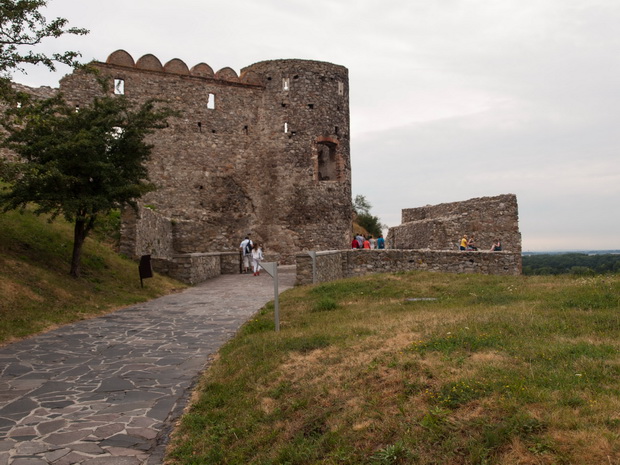
Its story begins back at the Bronze Age, but the first major castle was built by the Slavs in the 8th century and played an important role during the wars between Moravia and the Franks. During the 13th century, a stone castle was built to protect the western frontier of the Kingdom of Hungary. The fortification was strengthened during the wars with the Ottoman Empire and the castle never fell, until 1809, where it was finally destroyed by the forces of Napoleon.
Also, from this castle, saints Cyril and Methodius started their mission in 863. They developed the first alphabet to be used for Slavonic manuscripts, translated the Bible and wrote the first Slavic Civil Code, which was used in Great Moravia.
Back to the road heading north to Czech Republic. A few km further we meet the Volkswagen factory. It’s a really huge factory. Imagine our surprise when we saw that cars were transported between buildings with a lift!
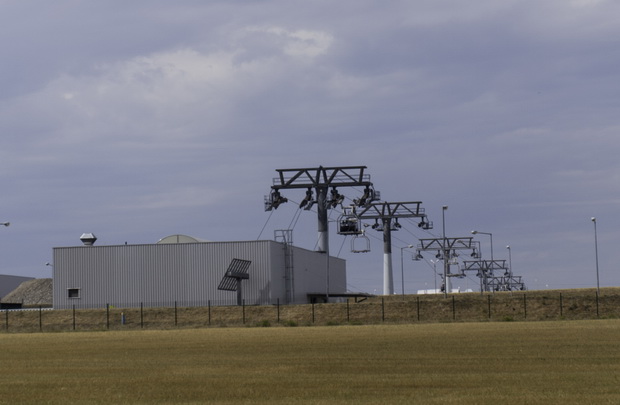
Entering Czech we hit the highway in order to cover some km fast. We decide to make a stop at the city of Brno and we park somewhere near the center. We continue by foot to the Zelnytrh square, which hosts an outdoor vegetable market.
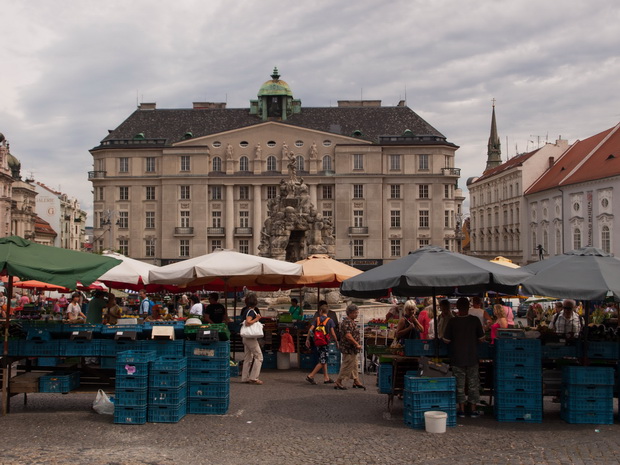
On one side of the square is the church of Mary Magdalene and on the other is the palace of Dietrichstein, one of the greatest Baroque buildings in the city. In the center of the square is the Parnas fountain, which was built between 1690 and 1695. Large rocks form a cave, decorated with statues symbolizing the ancient empires : Babylonia, Persia and Greece.
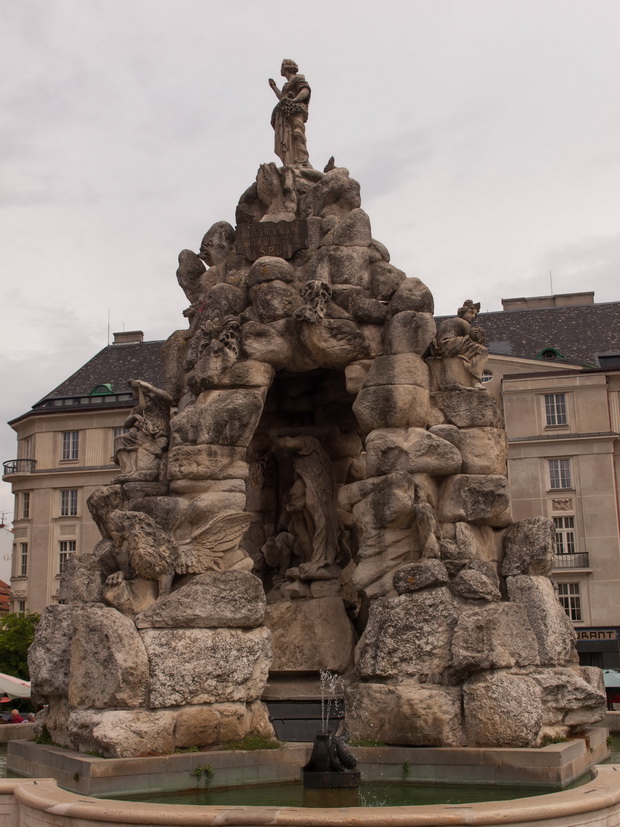
The next stop is at the magnificent square of Freedom, which is the center of the city.
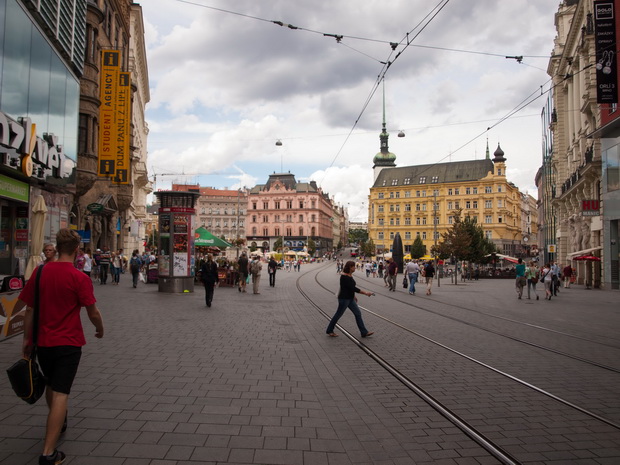
It has a triangular shape, and many interesting buildings like the House of Lords Lipa, Palace Klein, Kounitz Palace and the Home of the Four Giants are there.
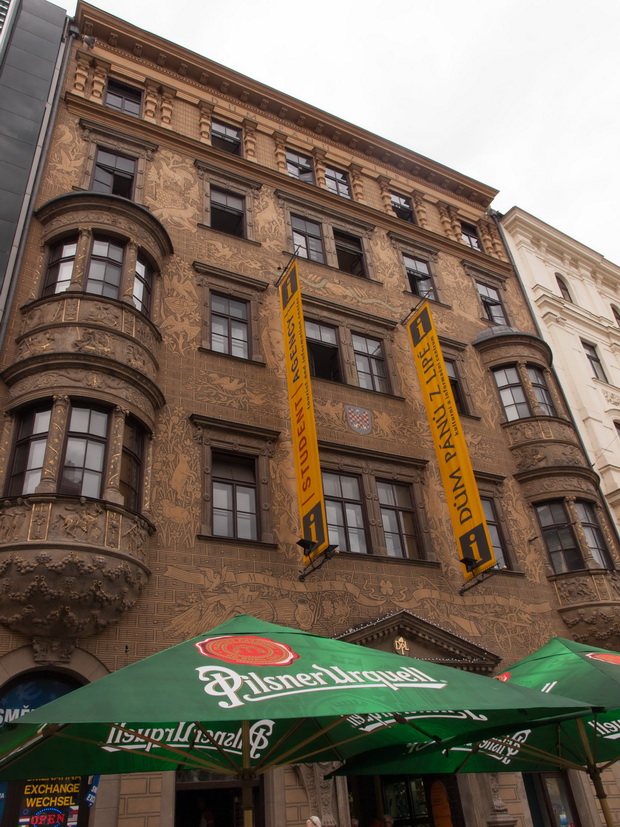
House of Lords Lipa
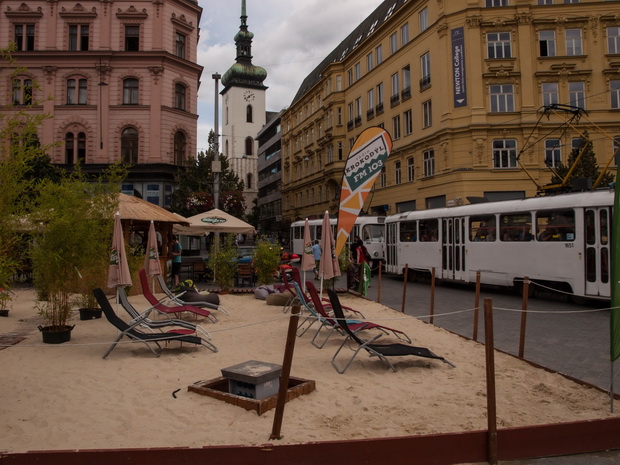
Sandy beach in the center of the square. You have to pay a fee of course…
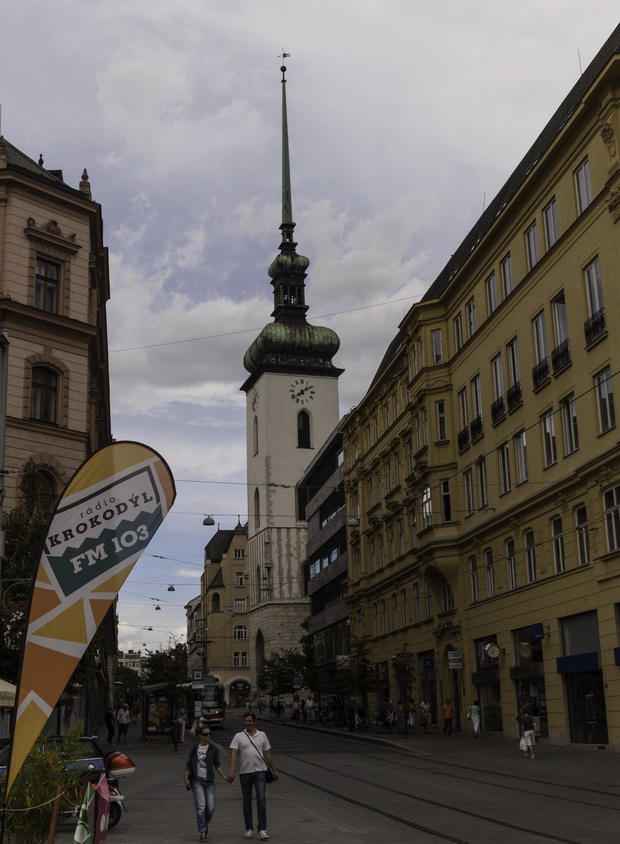
The bell tower of the Gothic church of St. James

Incredible architecture…
In the square there is also a headstone dedicated to the victims of the plague, built according to the plans of Jan Křtitel Erna in cooperation with various city sculptors. The most beautiful sculpture is the one of Virgin Mary in the central column.
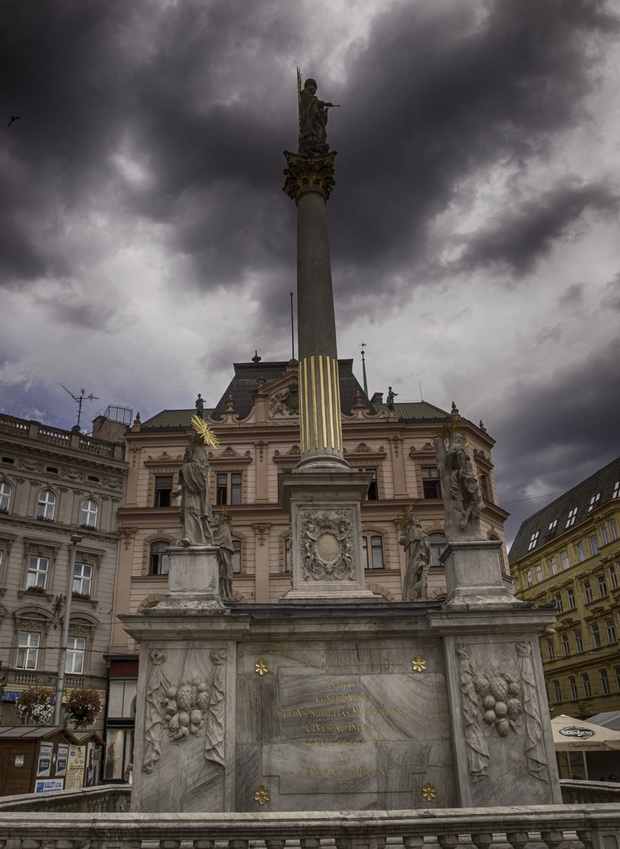
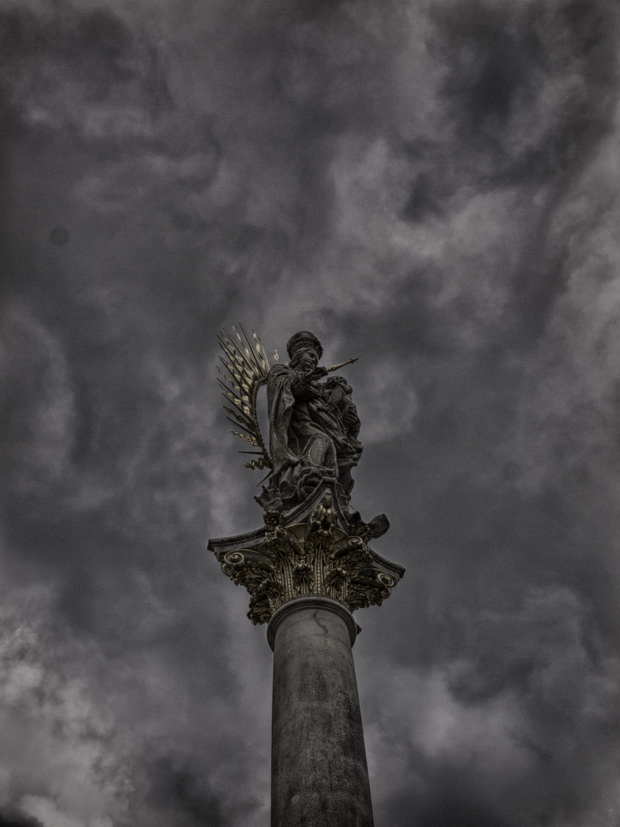
We continue our walk to the alleys and we find ourselves in front of the building of the old City Hall (Stara Radnice). It was constructed in the 13th century but it was badly damaged during the siege by the Swedes in 1945. For the record, the city resisted for four whole months and finally won the battle.
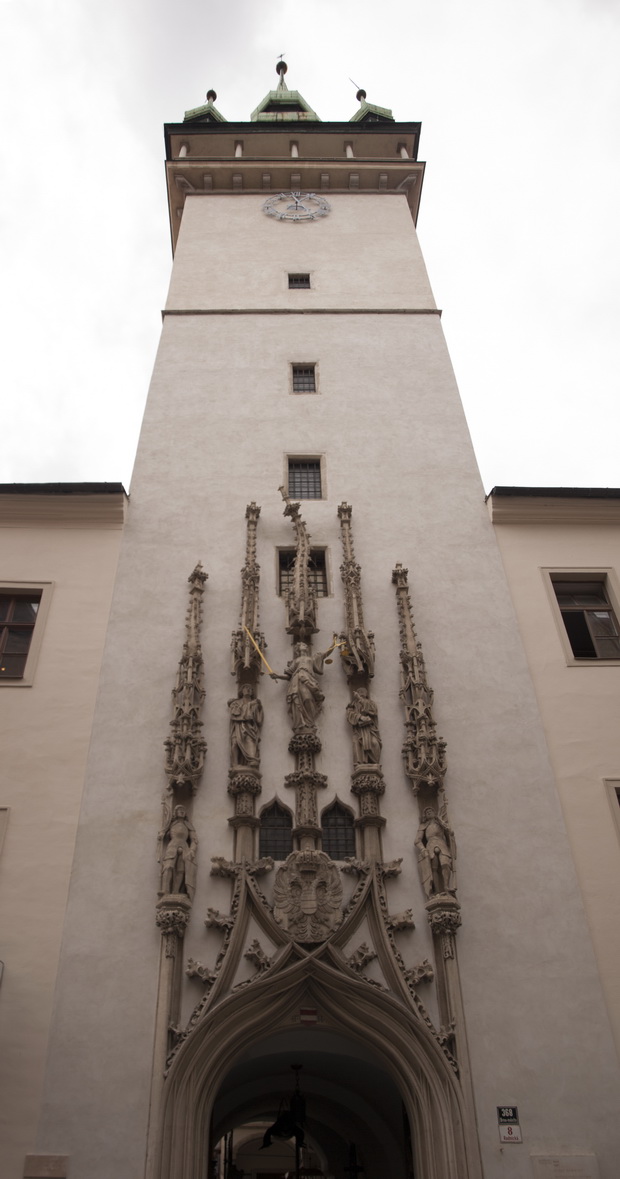
After wandering around for a long time, we return to our motorcycles and decide to pay a visit to the Circuit of Brno. The GPS takes us through small villages, side streets, forests…
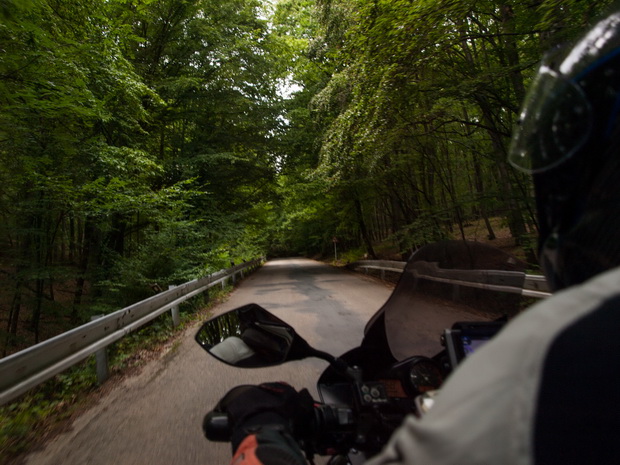
And when we start to worry that we have probably taken the wrong way, the circuit appears right in front of us…

Preparations for the Moto GP which will take place in 2 weeks have already begun.
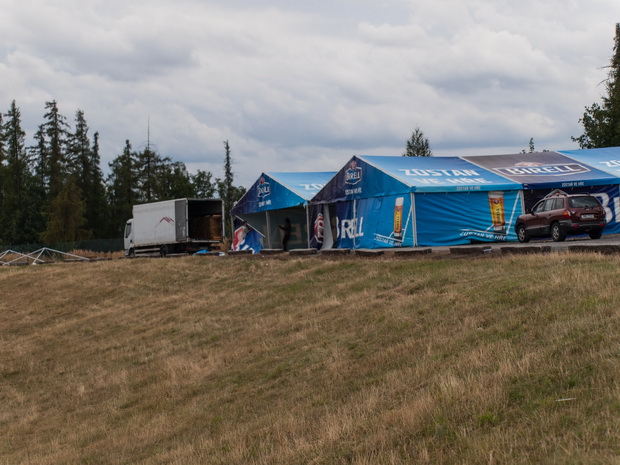
We hang out on a hillside admiring the drivers training on the track.
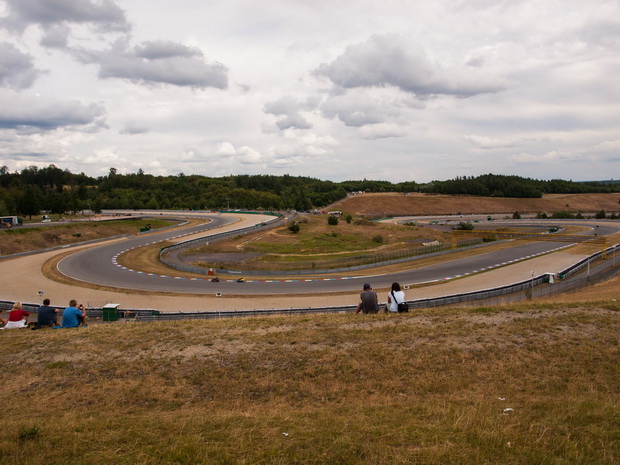
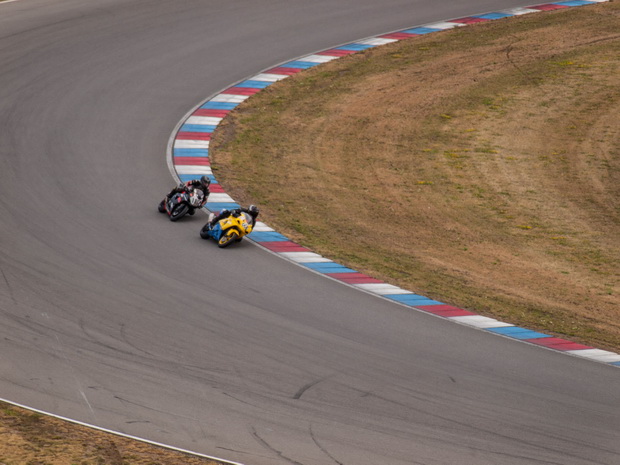
The next stop is Kutna Hora and more specifically the Ossuary of Sedlec, or the church with the bones, as it is widely known. I have seen so many pictures and so many documentaries for this site, that I am initially disappointed from the size of the church. It is very small but still impressive.
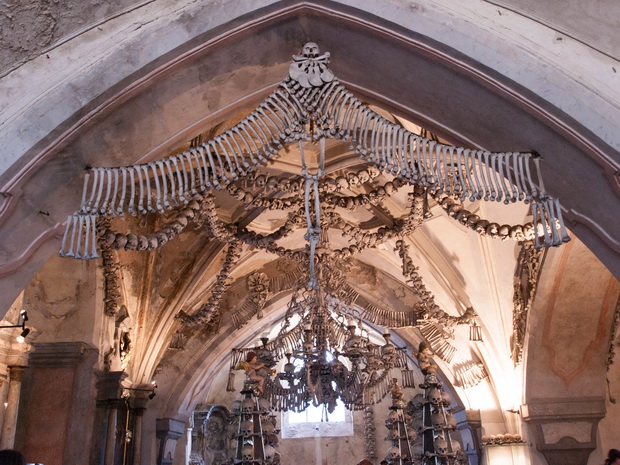
At the entrance they gave us a printed A4 (in Greek!) with the story of the church:
In 1278, King Otakar II of Bohemia sent Henry, the abbot of the Sedlec Monastery, to the Holy Land. When Henry returned, he brought with him soil from Calvary (Golgotha), which he scattered in the cemetery of the monastery. The news of this pious act soon spread and the cemetery in Sedlec became one of the most desired burial sites throughout Central Europe.
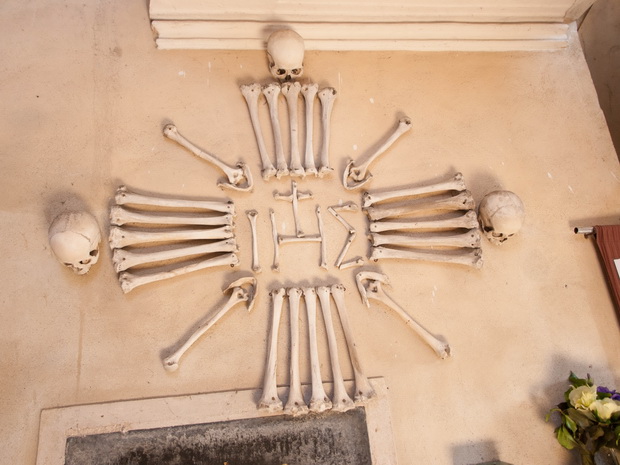
At the entrance, there is an inscription JHS (Jesus Hominum Salvator – Jesus Savior of Mankind), in Latin and Greek.
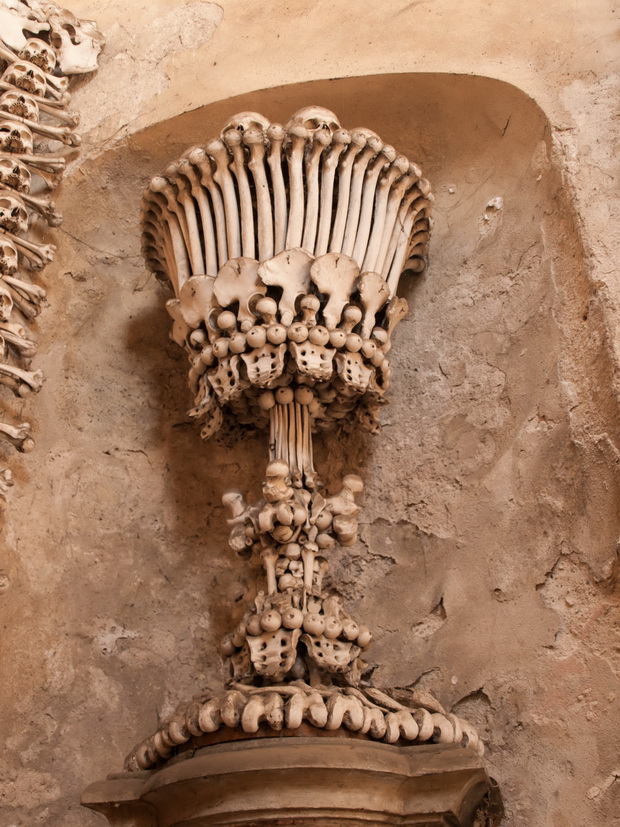

In the mid-14th century, during the epidemic of plague, and in the early 15th century, after Hussite wars, several thousand people were buried in the cemetery of the monastery, so an expansion was necessary. About 1400, a Gothic church was built in the center of the cemetery with a vaulted ceiling and a chapel at the bottom, which was used as an ossuary to guard the bones found in the space available created by the church. It also served as an extra space for new burials.
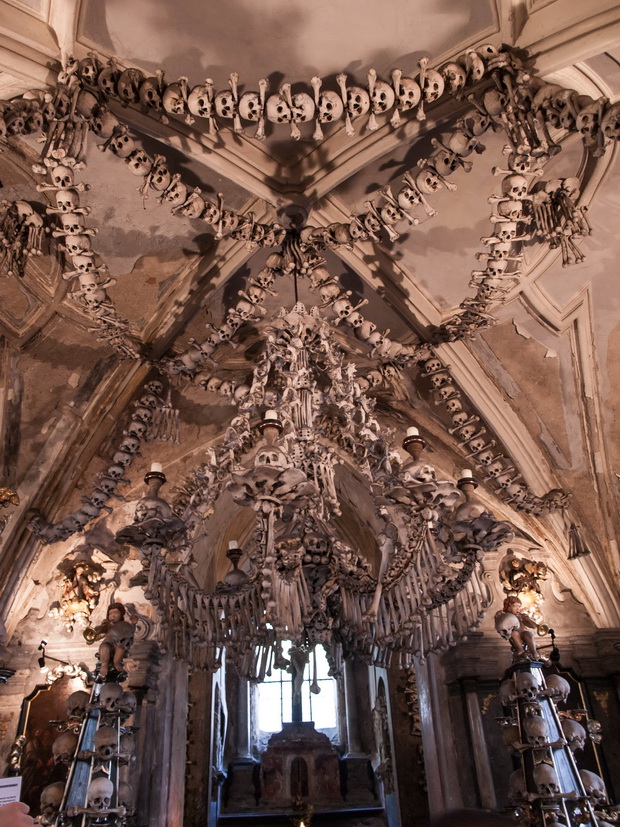
In the center of the church is a chandelier composed of all kinds of bones of the human body.
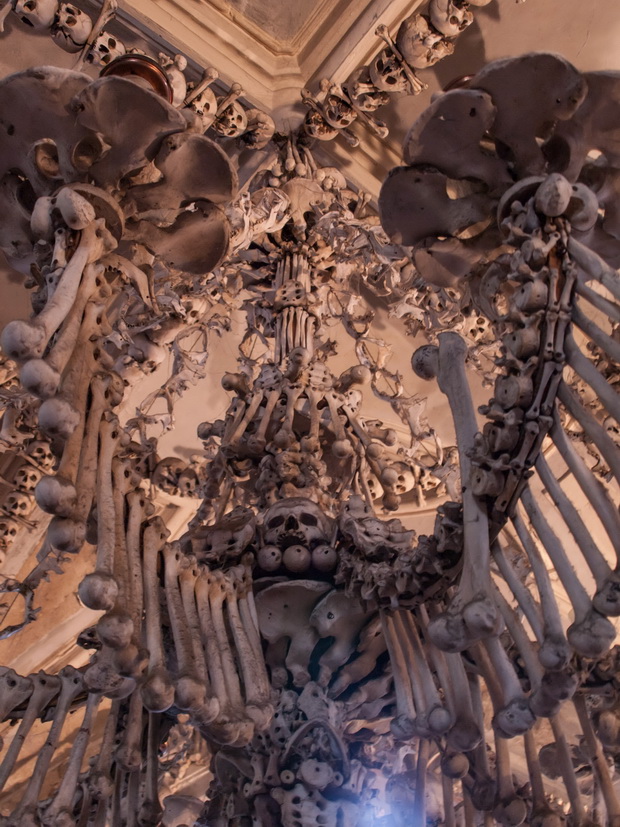
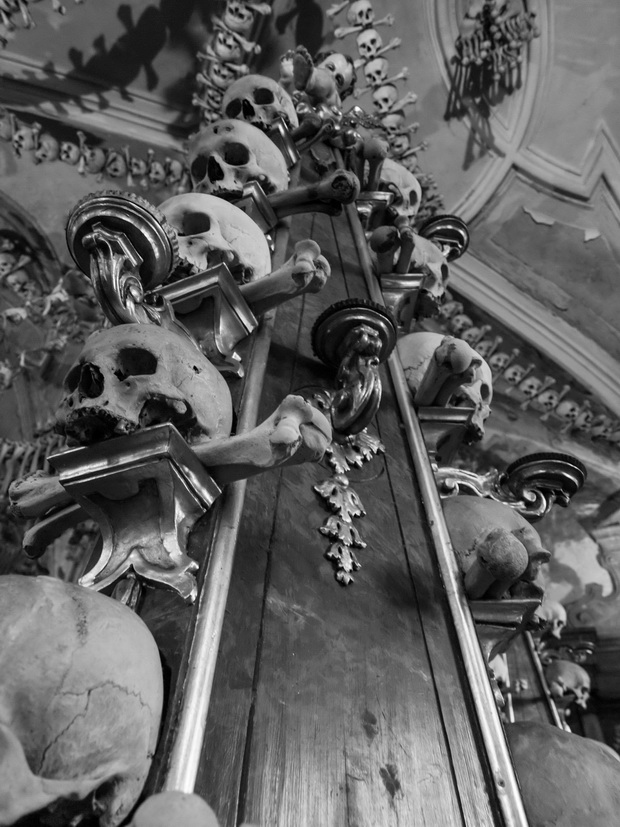
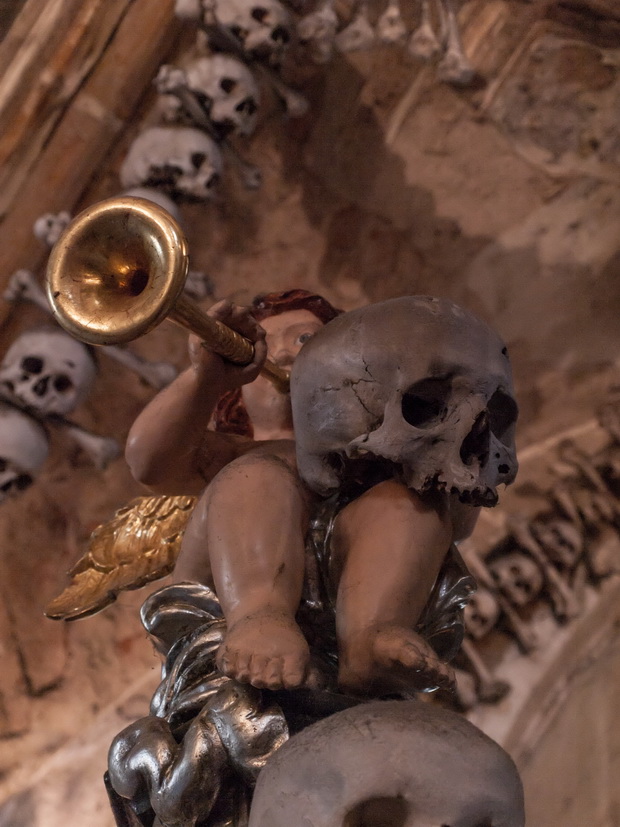
After 1511, a half blinded monk excavated and stacked the bones in the ossuary. During the period 1703-1710, the church was extended again and new premises in Baroque style were build.
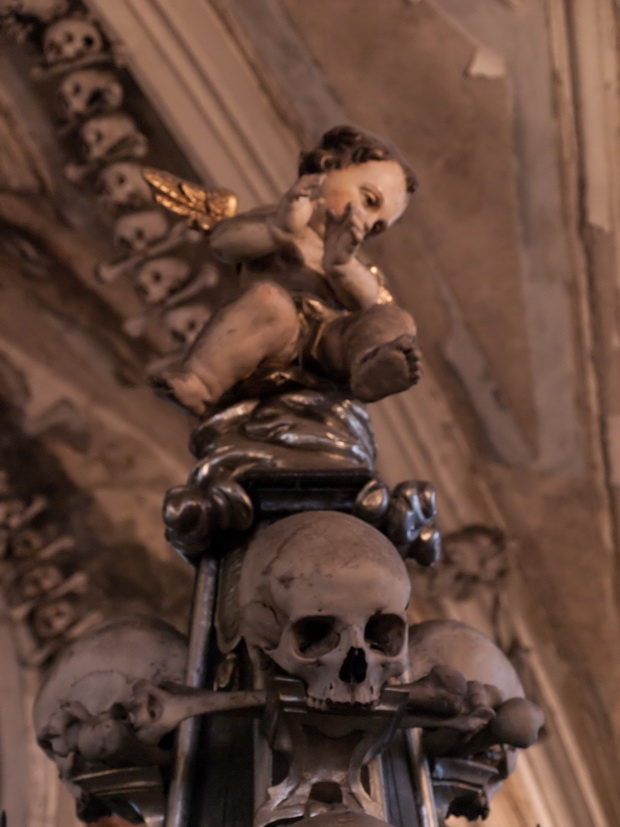

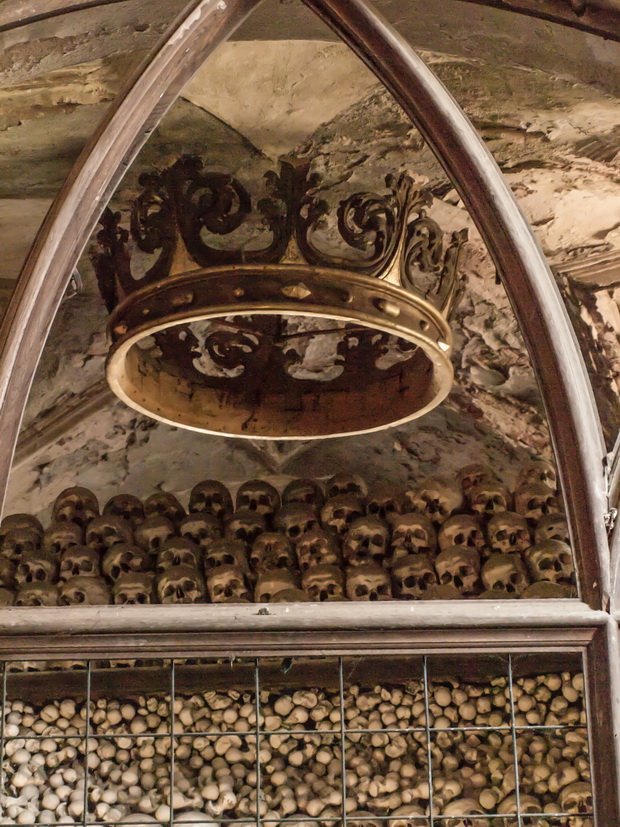
The final form of the church was given from František Rint, a Czech carpenter, who was employed by the Schwarzenberg family to organize the piles of the stacked bones inside the church. Rint, used the bones as a material for making furniture and decorative objects, giving to the church a ghoulish appearance. It is estimated that the bones in the church, are from 40 to 70 thousand people.

At the left side of the church there is the coat of arms of the Schwarzenberg family.

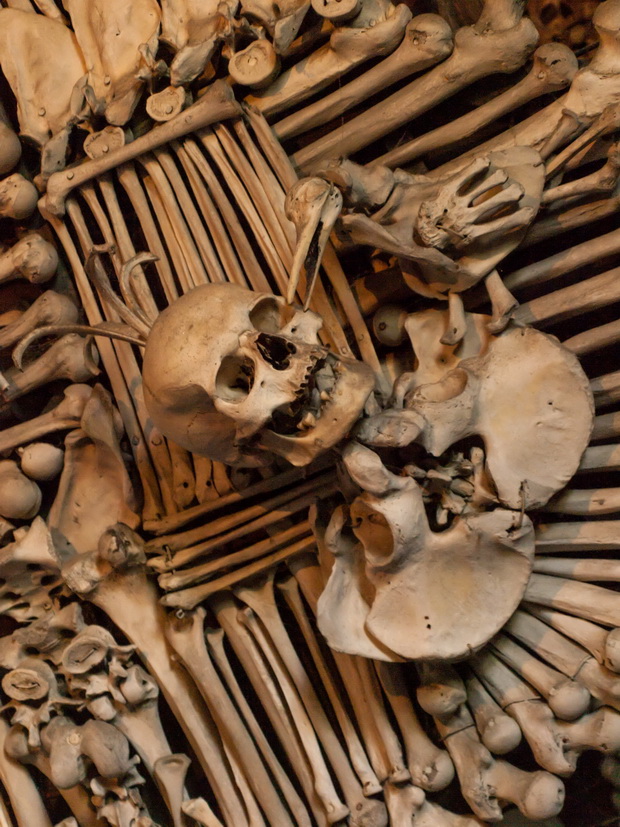
The crow stinging the eye of a Turkish soldier, symbolizes the victory of Schwarzenberg over the Turks at the battle of Raamp in 1591.
It’s a bit late already and the Czech capital awaits us. We cover the short distance that separates us from the city and after some searching we find the apartment that we have booked (Anyday appartments).
After the check in, we call Jan, a friend of Natasa from Erasmus, who will show us the city. It is one of the few times in my travels that I know so little about something that we will visit. I avoided the three Prague guides in my library, in order -finally- to have something to impress me.
First lunch (at Mlsnej Kocour, some blocks away) and then we walk to the old town which is at a relatively short distance from our apartment.
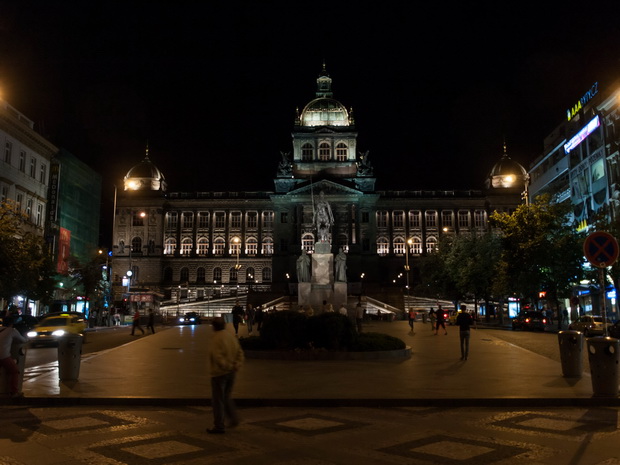
Our tour starts from Wenceslas square, opposite the National Museum and continues following the Vaclavske road, until we reach the old town. The first stop, of course, is in front of the famous astrological clock. The time was about 12:00 and lots of people waited with a camera in hand to capture the show. So we did…
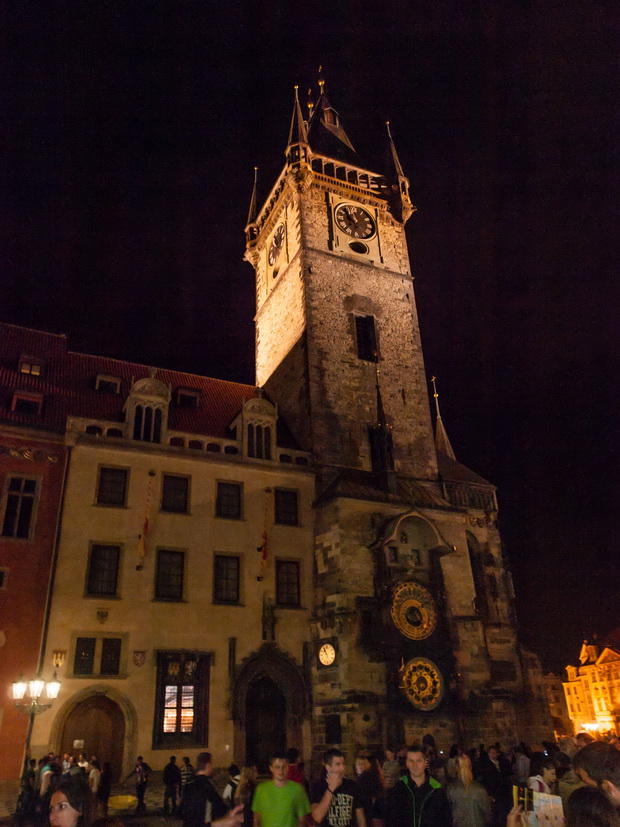
More details about the city sights tomorrow. For now just a few night shots to keep you interested :
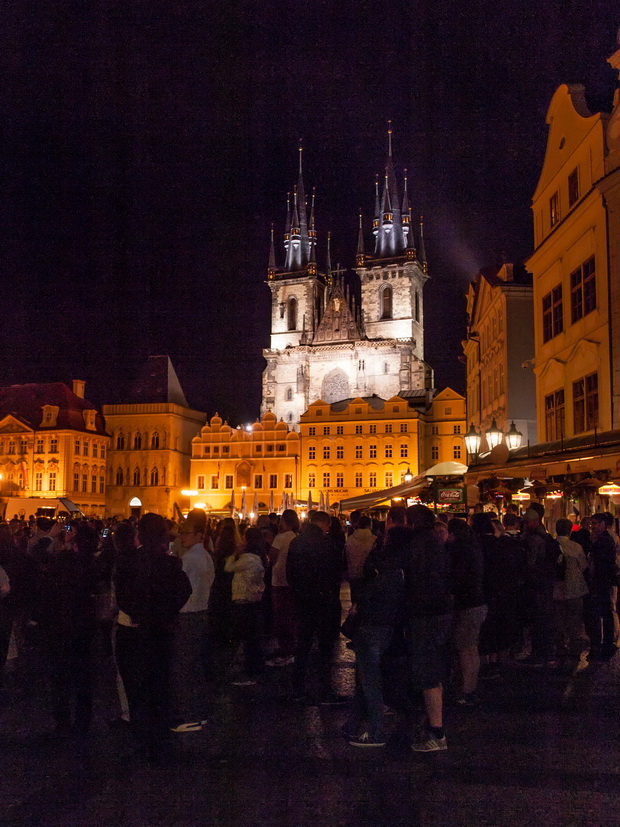

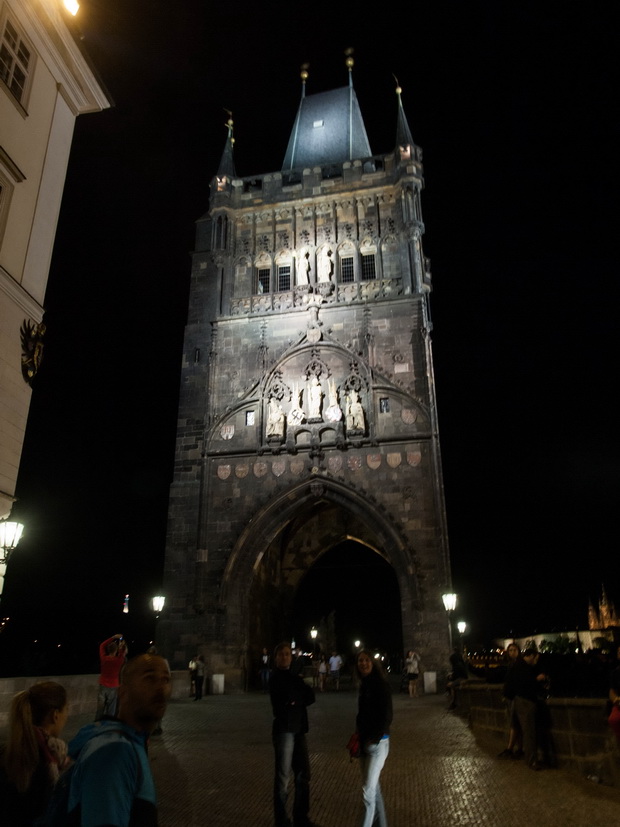
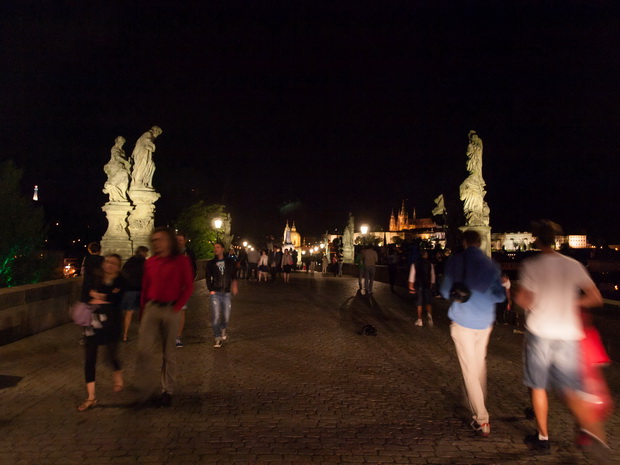
| « Previous Page | Next Page » |








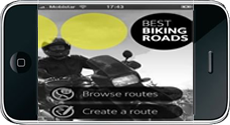



Μπραβο παιδια παντα τετοια ,
Ταξιδευω απο το 1992 με rd 350 στην αρχη fzr1000 ,hayabusa αργοτερα και απο περυσι t max500 yamaha.
Σας διαβαζω γιατι φετος θα ειναι η πρωτη φορα που θα περασω απο βαλκανια.
Λοιπον ας ειμαστε ολοι καλα να απολαμβανουμε αυτο το μοναδικο που σου κανει η μοτοσυκλετα , να σε κανει 18 χρονων με το που ξεκινας το ταξιδι
Ευχαριστούμε Χρήστο…
Είμαι σίγουρος πως θα περάσεις υπέροχα. Τα Βαλκάνια κρύβουν απίστευτες ομορφιές.
Οι μοτοσυκλέτες είναι “μηχανές του χρόνου” τελικά
Πραγματικά πολύ όμορφο ταξιδιωτικό, φέτος είμασταν και εμείς στο περίπου!!! Το μόνο που έχω να πω σαν διευκόλυνση, αν δεν το έχετε κάνει ήδη, πιστεύω ότι είναι καλύτερα να πηγαίνεις μαυροβούνιο μέσω κοσόβου. Δηλαδη σκόπια, κόσοβο, μαυροβούνιο. Εχω πάει ήδη 2 φορές από αυτην την διαδρομή και με αυτά που βλέπω από αλβανία είναι πολύ καλύτερη από άποψη δρόμων. Δεν υπάρχει κανένας κίνδυνος, απλά βγάζεις μια ασφάλεια 15 ευρώ που ισχύει για 15 μέρες πριν μπεις στο κόσοβο, συνεχίζεις μεχρο ουροσεβατς και απο εκει αριστερα να περασεις τα σύνορα για μαυροβουνιο. Λιγα παραπάνω χλμ αλλα που βγαίνουν πιο εύκολα και πιο γρήγορα.
Έχεις δίκιο Γιώργο. Μαυροβούνιο – Κόσοβο – Σκόπια είναι πολύ πιο εύκολα. Εμείς επιλέξαμε Αλβανία γιατί θέλαμε να κάνουμε την ορεινή διαδρομή Kukes-Peshkopi, η οποία είναι κα-τα-πλη-κτι-κή, αλλά όλα τα περίχωρα είναι δράμα…
Όπως και να ‘χει, όλα είναι μια εμπειρία. Ταξίδι να είναι και όπου να’ ναι!
Καλούς δρόμους να ‘χουμε
ΠΟΛΥ ΚΑΛΟ ΚΑΙ ΑΝΑΛΥΤΙΚΟΤΑΤΟ.ΕΙΝΑΙ ΤΕΛΙΚΑ ΞΕΣΗΚΩΜΟΣ ΝΑ ΔΙΑΒΑΖΕΙ ΚΑΝΕΙΣ ΤΑ ΤΑΞΙΔΙΩΤΙΚΑ ΣΑΣ.ΤΟ ΚΑΛΟ ΕΙΝΑΙ ΝΑ ΕΧΕΙ ΠΟΚΙΛΙΑ ΤΟ ΤΑΞΙΔΙ ΚΑΙ ΑΥΤΟ ΕΙΧΕ ΣΥΝΔΙΑΣΜΟ ΟΛΩΝ(ΣΑΛΩΝΙΑ-ΑΛΩΝΙΑ).ΤΕΛΙΚΑ ΔΕΝ ΘΑ ΠΑΩ ΠΟΤΕ ΠΟΡΤΟΓΑΛΙΑ ΑΠ’ΟΤΙ ΦΑΙΝΕΤΕ…ΠΑΛΙ ΣΤΑ ΒΑΛΚΑΝΙΑ ΘΑ ΒΡΕΘΩ….
Να ‘σαι καλά Γιώργο. Τα Βαλκάνια όντως μας έλκουν σαν μαγνήτης. Έχουν κάτι το μαγικό που όλο μας κάνουν να στρέωουμε τις ρόδες μας προς τα εκεί. Ίσως είναι το ανεκμετάλευτο ακόμα παρθένο τοπίο που σε συνδιασμό με τους αυθαιντικούς ανθρώπους που δεν σε κοιτάνε σαν κομπόδεμα. Ένα είναι σίγουρο πάντως… Πως και οι δικές μου ρόδες σύντομα θα ξανατραβήξουν ξανά προς τις Βαλκανικές χώρες. Έχω κάνει 5-6 ταξίδια εκεί, αλλά έχω ακόμα πολλά να δω.
Πολλά ευχαριστώ & πολλά μπράβο στην παρέα!!
Να είστε καλά παιδιά!!Πάντα τέτοια!!
Να είστε γεροί να ταξιδεύετε!!
Ευχαριστώ για το χρόνο & την ενέργεια που δαπανήσατε για να το μοιραστείτε!!
Τέτοια ταξιδιωτικά αποτελούν πολύτιμο διάλλειμα & πηγή πληροφοριών για κάθε επίδοξο ταξιδιώτη.
Ευχαριστούμε Κωστή